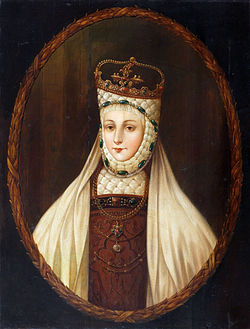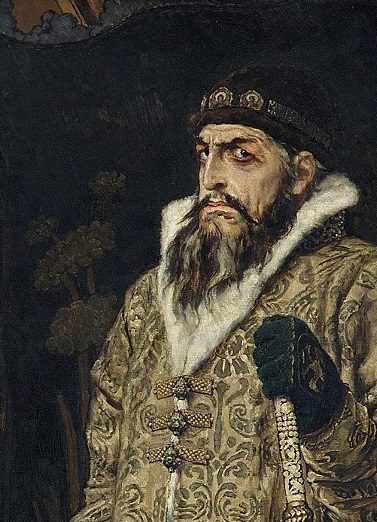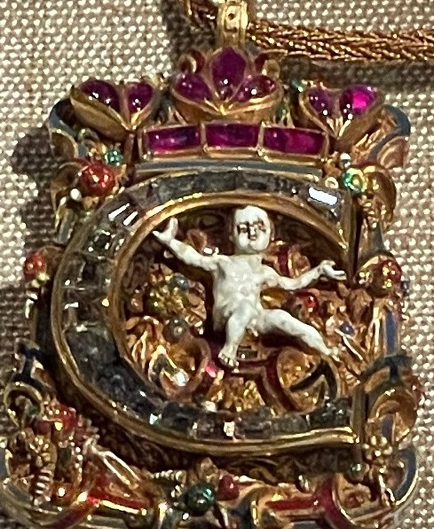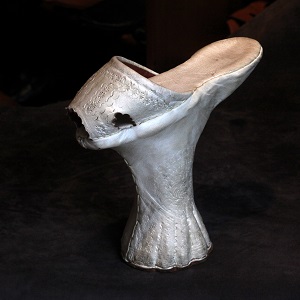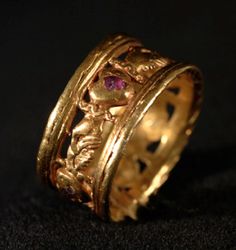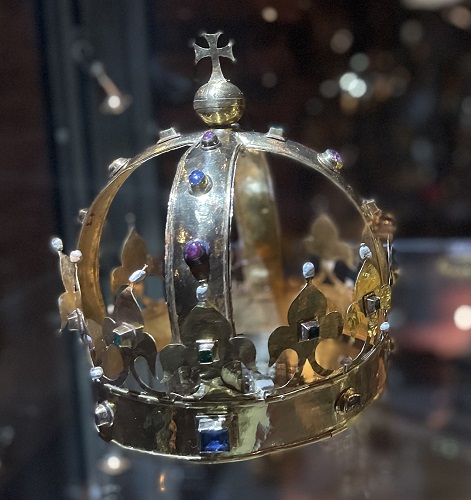Catherine Jagiellon still fascinates Finns

Nina Manninen, an archaeologist pursuing a doctoral degree at the University of Turku, is conducting research on the material culture of the Renaissance era through the analysis of Catherine Jagiellon's clothing and artifacts. Her reconstructed costume is currently being exhibited at Turku Castle Museum.
Could you tell more about your interest in history and experimental archeology?
I am a doctoral researcher in Archaeology at the University of Turku in Finland. My research focuses on the possessions of Catherine Jagiellon. I explore this topic through contemporary Polish-Lithuanian and Swedish sources. As an archaeologist, I investigate the material culture and the biographies of the artefacts. I also study 16th-century sources on the possessions of Finnish women, which complements the study on artefacts found in the possessions of Catherine, the Duchess of Finland.
In addition to my research, I am a passionate historical re-enactor. I employ study on extant artefacts and iconographical sources and techniques from experimental archaeology to reconstruct clothing and other artefacts from the 16th-century sources, believing that first-hand experience of wearing and using the artefacts that have predominantly survived only in written records is essential to understanding them, their uses, and their meanings.
I am committed to sharing my expertise with others and bridging the gap between academia and practical re-enactment. I achieve this by offering courses, lectures, interviews, and presentations to enrich people's understanding of 16th-century North and East European clothing and material culture. Ultimately, my work showcases the synergy between rigorous research and immersive historical engagement. I am dedicated to preserving and bringing to life the rich history of 16th-century women through the lens of clothing and material culture.
How did you became interested in history of Catherine Jagiellon? What inspires you the most in her personality?
I have always had a keen interest in the history of Medieval and Early Modern times, and have known about Catherine since I was little. Later, I found myself working at Turku Castle, where Catherine resided as the Duchess of Finland in 1562 and 1563. The place and her stories intrigued me, and I wanted to recreate an outfit based on the inventories of the Duchess’s belongings. To my amazement, the inventories contained a multitude of clothing items and other artefacts, and when I realized that previous research on them was outdated and incomplete, I wanted to start researching the inventories myself and make them accessible to everyone.
The most intriguing aspect regarding Catherine is the material culture that surrounded her. I am interested in the things she brought with her from Poland and Lithuania to Turku Castle, their origins, their significance to her, how she used them, and what happened to them after her passing. All of these things also shed light on her personality and mental resources. Catherine was raised as a princess in a wealthy kingdom and was taught to take her position in life very seriously. Choosing to follow her husband into captivity, even when offered her freedom, is a testament to her dedication.
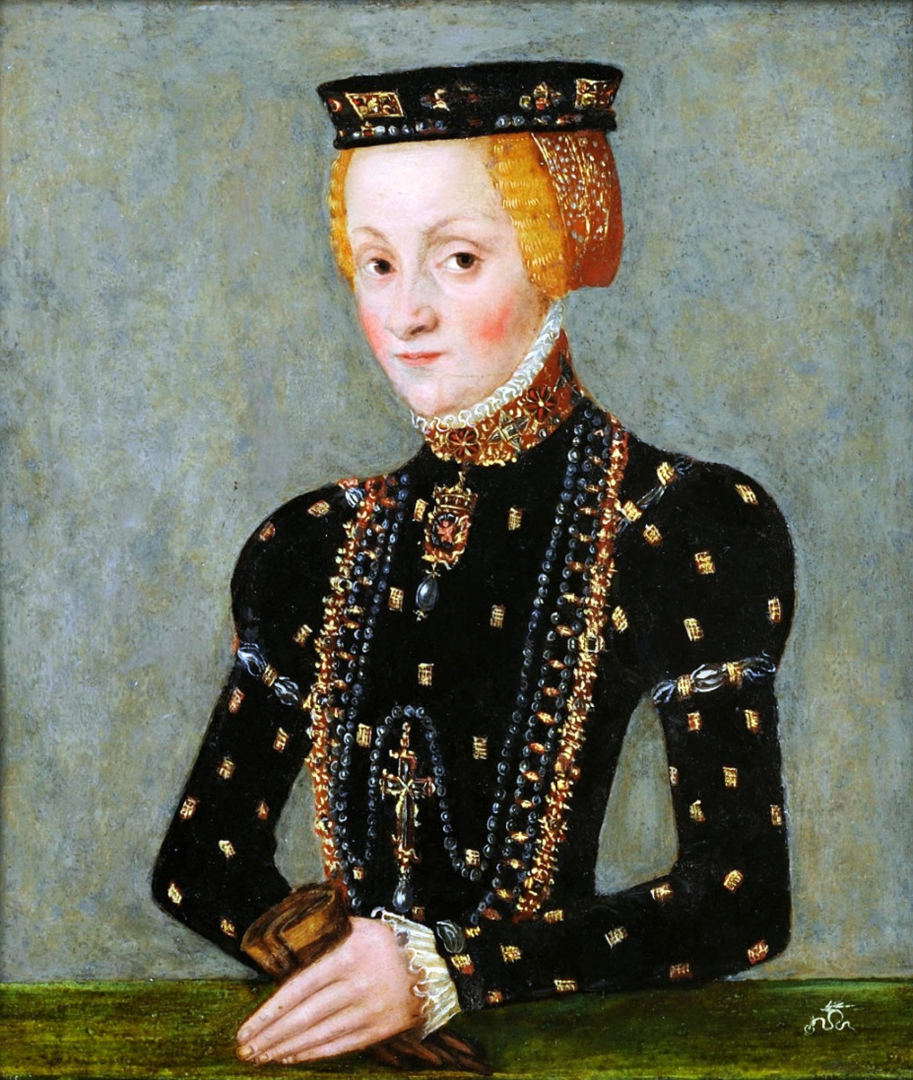
Catherine Jagiellon. Painting by Lucas Cranach the Younger.
What is an image of her in Finland? Why the Finns do not forget her even after almost 500 years?
I believe one of the reasons why Catherine is still remembered in Finland after five centuries is that she was part of a new era in history. Duke Johan of Finland transformed the old Medieval Turku Castle, the center of his Duchy, into a Renaissance palace for him and Catherine, following the latest architectural trends. We also have an increased understanding of the Castle and its people starting from the 16th century, so we know more about this era than the times before. Adding Catherine’s immense possessions to the equation, her and Johan’s time in Turku is remembered as a period of great wealth.
Catherine also stands out from the other Queens of Sweden due to her heritage, which may have contributed to her being remembered.
Unfortunately, no sources other than the inventories of her possessions provide information about her time in Finland. This highlights the significance of the existing sources. However, many old tales surrounding Catherine are still told.
Tell about you project Changing Fashions – what is the main idea and purpose?
Upon comparison of the Polish-Lithuanian and Swedish inventories of Catherine's possessions, it is evident that her wardrobe was largely East European but changed to North European fashion after she moved to Turku. This is in contrast to the commonly held belief in Finnish research that her wardrobe was made up of Italian and Spanish fashions that she introduced to Finland and Sweden. However, the Polish dowry inventory only has three Spanish-styled gowns out of a total of forty-two gowns and no Italian items of clothing. Furthermore, there are no traces of Italian fashions taking root in the North, and Finnish and Swedish sources suggest that Spanish fashions were familiar even before Catherine’s time.
It was customary for a bride to adopt the fashions of her new home region, and Catherine did the same. Written a year after her dowry inventory, a Swedish inventory shows that the richly decorated Polish gowns were replaced with more subdued Northern fashion, and some typically Polish accessories were no longer in use. Thus, Catherine did not introduce Italian or Spanish fashions to the North but rather came dressed in Polish clothing and soon adopted the style of the Northern Renaissance.
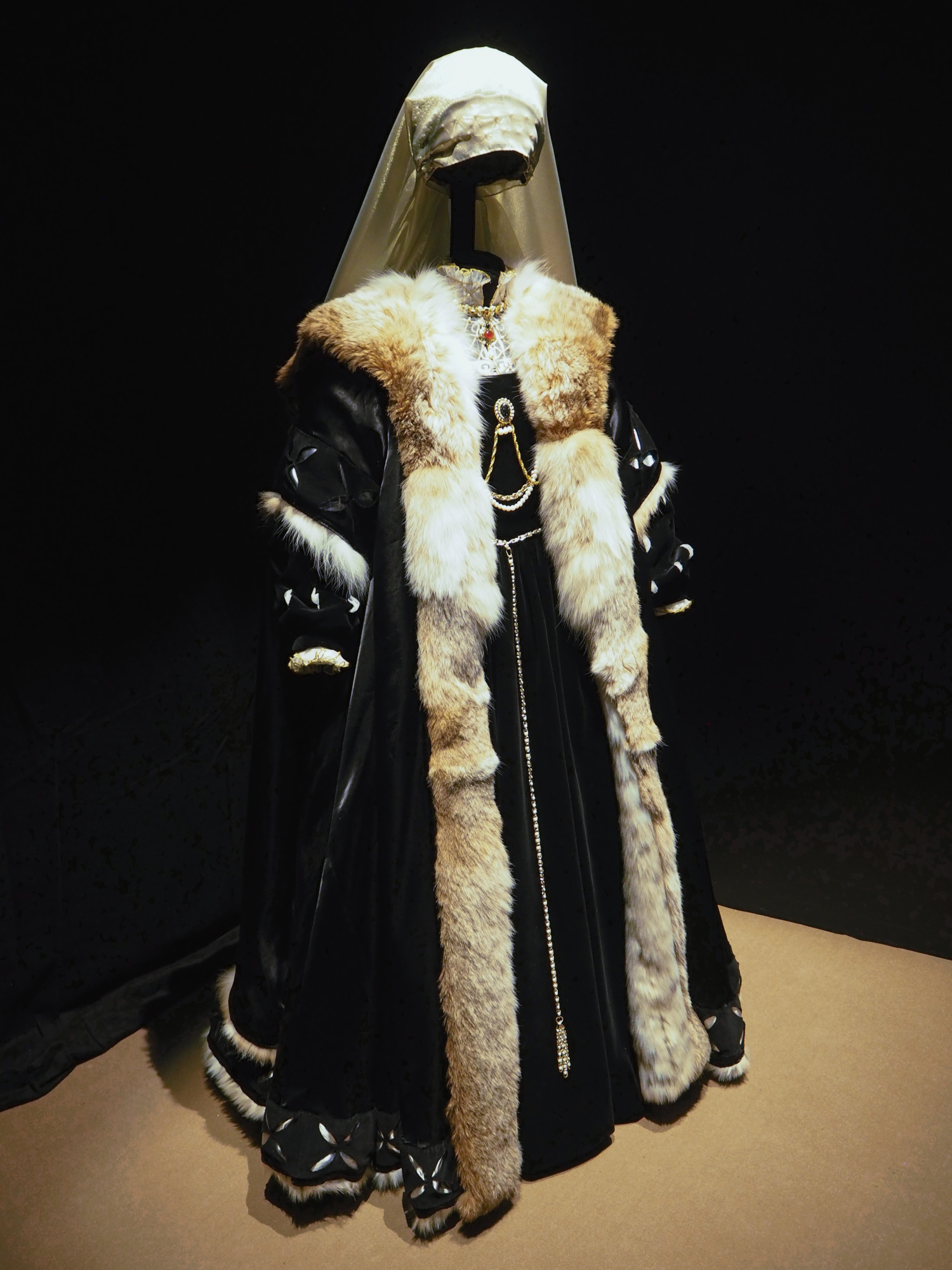
A dress of a princess reconstructed by Nina Manninen, based on the description of Catherine Jagiellon's dowry.
Is it difficult to reconstruct the costumes of the 16th century? Was Catherine Jagellon a “fashionista” of her time?
In the 16th century clothes and accessories were made by a variety of experts specializing in weaving and dying, cutting, sewing, embroidering, lacemaking, jewellery making and more. As a result, it is challenging for a single person to do everything alone. Additionally, the construction of 16th-century clothing items is not always clear. However, numerous examples show that it is possible to create beautifully made, historically accurate-looking items despite these challenges.
The inventories of Catherine’s possessions present another challenge. The language used in the documents is from the 16th century, and they are written in Polish and Swedish. The grammar, expressions, and terms in these documents differ from our 21st-century language. Some words or expressions can be difficult to understand because they have fallen out of use, as have the things they describe. In cases where some of the details are vague or something essential is missing from the description, a case-by-case assessment is needed to determine the best way forward.
Even the materials available determine which reconstructions can be executed. For example, some 16th-century fabrics are no longer being produced, or their cost makes them unavailable for use.
It was common for a 16th-century noblewoman to adopt fashion from abroad. Poland and Lithuania, located between Western Europe and the Oriental East, had Continental fashions flowing in from the left and Turkish fashions from the right, which contributed to the regional dress style. This resulted in the unique 16th-century Polish –Lithuanian fashion that dominated even Catherine’s wardrobe. In addition to her homeland's rich and decorated styles, Catherine’s wardrobe reflected her status as the Princess of one of the largest and richest kingdoms of Renaissance Europe. Her jewellery, gowns, and accessories shimmered with gold and silver, diamonds, rubies and pearls, as well as the gowns themselves were made of imported silks and gold and silver fabrics.
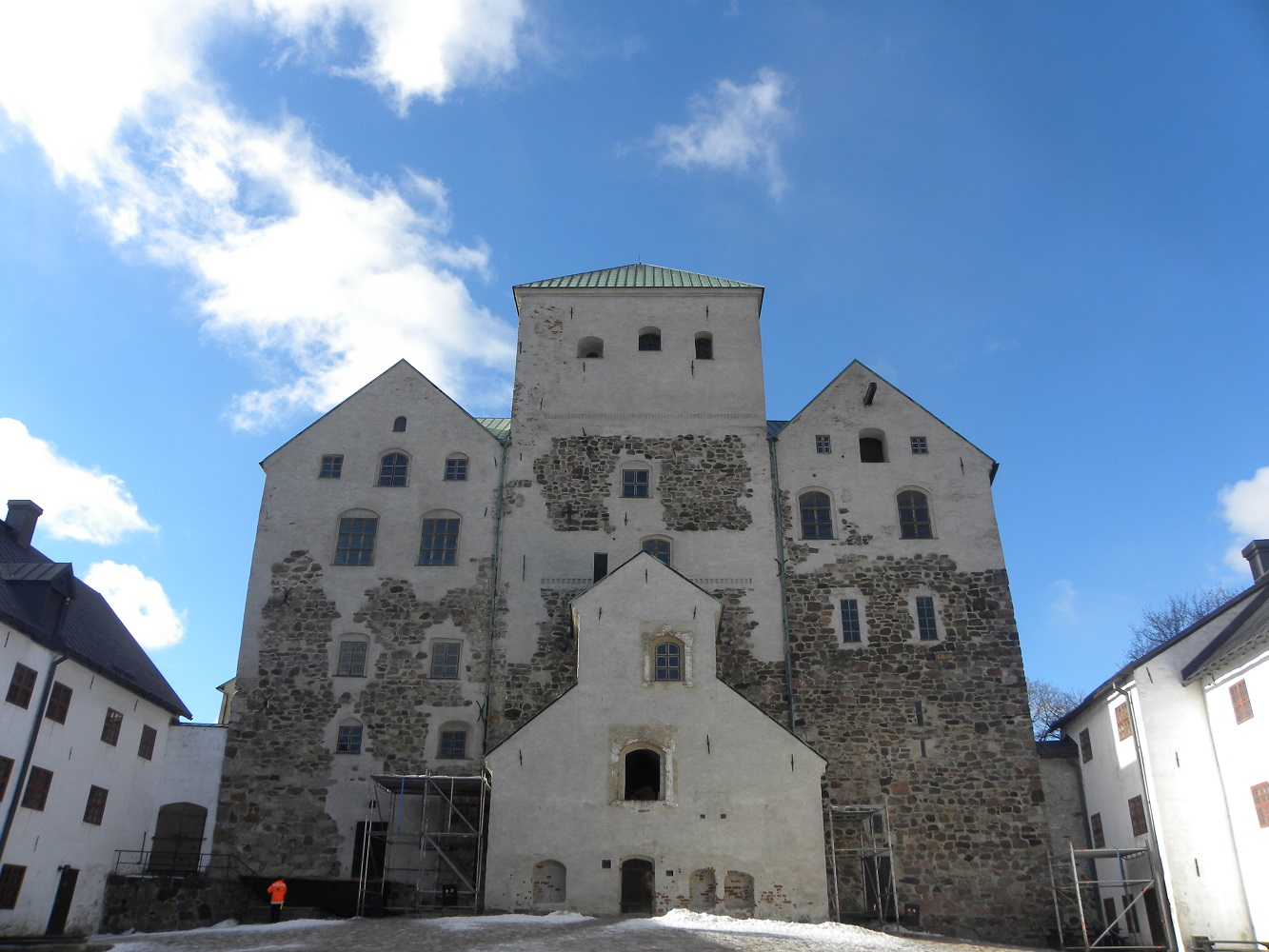
Turku Castle in Finland, where Catherine Jagiellon lived in 1562-1563.
Tell about your partnership with the Tuku Castle museum creating an exhibition about the princess.
The exhibition "The Princess's Journey" at Turku Castle narrates the life story of Catherine Jagiellon, a Polish-Lithuanian princess who became the Duchess of Finland and eventually the Queen of Sweden. The exhibition, created in collaboration with researchers from Finland and abroad, was inspired by the newest research on Catherine, including my contributions.
When the making of the exhibition was discussed in 2022, I was asked to write an informative article about Catherine’s belongings. The article was to be used as a reference source for the exhibition but also for future guided tours, publications, etc. I chose the most significant and exemplary artefacts from the documents to be showcased in the exhibition since it is impossible to address every aspect of the topic in such a limited context.
I also provided my opinion considering the visuals of the exhibition. For example, the exhibition's overall green color scheme was inspired by the green color of Catherine's interior textiles. I also discussed the styles and colors of the gowns of each Jagiellon sister and their mother – their cartoon versions are scattered around the exhibition, and they are distinguished by their clothing.
This also resulted in very detailed illustrations. For instance, the scene that depicts Catherine and Johan’s wedding includes every detail from the documents.
Catherine's dowry inventory from 1562 is used in many exhibition units, and it also has its own display unit. One of the exhibition units features a reconstruction of Catherine’s outfit. The ensemble is displayed, and a video demonstrates how to put it on. The outfit consists of a black-embroidered linen shift, a reddish-brown petticoat lined with sable fur, a black velvet gown with slashed sleeves, and a black atlas silk loose gown with lynx fur lining. The accessories include a coif and a partlet embroidered with gold and pearls, gold-embroidered wrist ruffs, a pearl-encrusted bramka, and a large golden veil. The goal was to find an outfit Catherine could have worn when she stepped into the Castle's gates for the first time at Christmas in 1562. Every piece is based on the inventories. While I curated and designed the outfit, it was crafted by numerous skilled seamstresses, embroiderers, and furriers.
When the exhibition ends, the outfit will be used for events or guided tours.
Interviewed by Ilona Skujaitė
Photos by Nina Manninen, Marjo-Briitta Talus, Ilona Skujaitė
Posted on 2023-02-19


